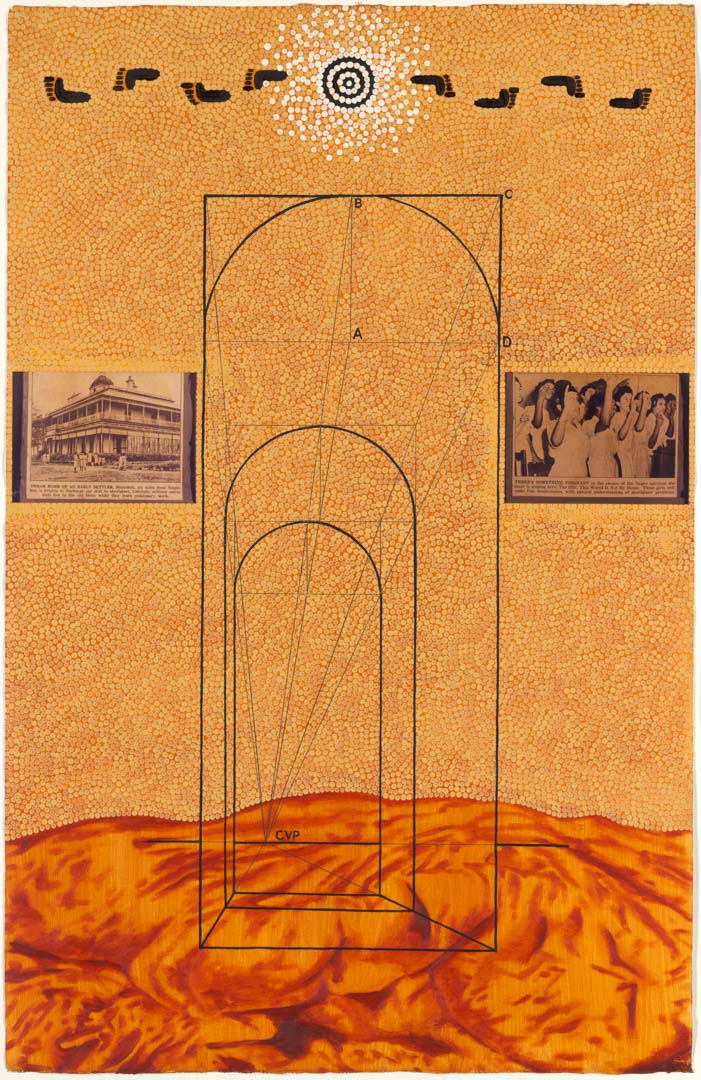We acknowledge the Traditional Owners of the land on which the Queensland Art Gallery | Gallery of Modern Art stands and recognise the creative contribution First Australians make to the art and culture of this country.

Gordon Bennett / Australia 1955–2014 / This world is not my home 1988 / Synthetic polymer paints and photographic reproductions on paper / 103 x 66.5cm / Purchased 1989. EMC Nielsen Bequest / Collection: Queensland Art Gallery | Gallery of Modern Art / © The Estate of Gordon Bennett
Gordon BennettThis world is not my home 1988
Not Currently on Display
As a teenager, Gordon Bennett became aware of his Indigenous heritage, and art became the tool through which he could examine his identity as an Australian of both Aboriginal and Anglo-Celtic descent. Bennett often felt like an ‘outsider’ and much of his work challenges the idea of the ‘other’, as represented in Western art history.
The world is not my home refers to the experiences of Bennett’s mother. Orphaned at a young age, she was raised on Cherbourg Aboriginal Mission in central Queensland, and later trained as a domestic at a missionary school in Singleton in New South Wales. In 1948, Post magazine featured an article on the school, which was accompanied by photographs of Bennett’s mother performing household duties.
In Bennett’s painting, grid lines converge at a central vanishing point, foregrounding the European system of perspective and referencing Western ways of seeing the world.
Gordon Bennett was born in 1955 in the central Queensland town of Monto. Bennett ‘discovered’ his Aboriginality at the age of eleven. The explicit imagery in his paintings concentrates on his Indigenous heritage, the Eurocentric schooling he experienced, the subjectivity of history, patriarchal knowledge systems and racism.
Bennett attended the Queensland College of Art in Brisbane and completed a Fine Arts Degree in 1988. He had already begun exhibiting his large, semi-autobiographical paintings the previous year in group exhibitions at THAT Contemporary Art Space in Brisbane and the Museum of Contemporary Art in Sydney.
From the time he graduated from art college, Bennett’s work displayed a high level of maturity and a clear sense of direction, but it also flagged his intention to resist certain expectations or categorisations of him as a particular ‘kind’ of artist. He remained uncomfortable with terms such as ‘urban’ or Aboriginal artist, for example, throughout his career, as he consistently drew on imagery and references from Indigenous and Western approaches to art, rather than a preference for one over the other.